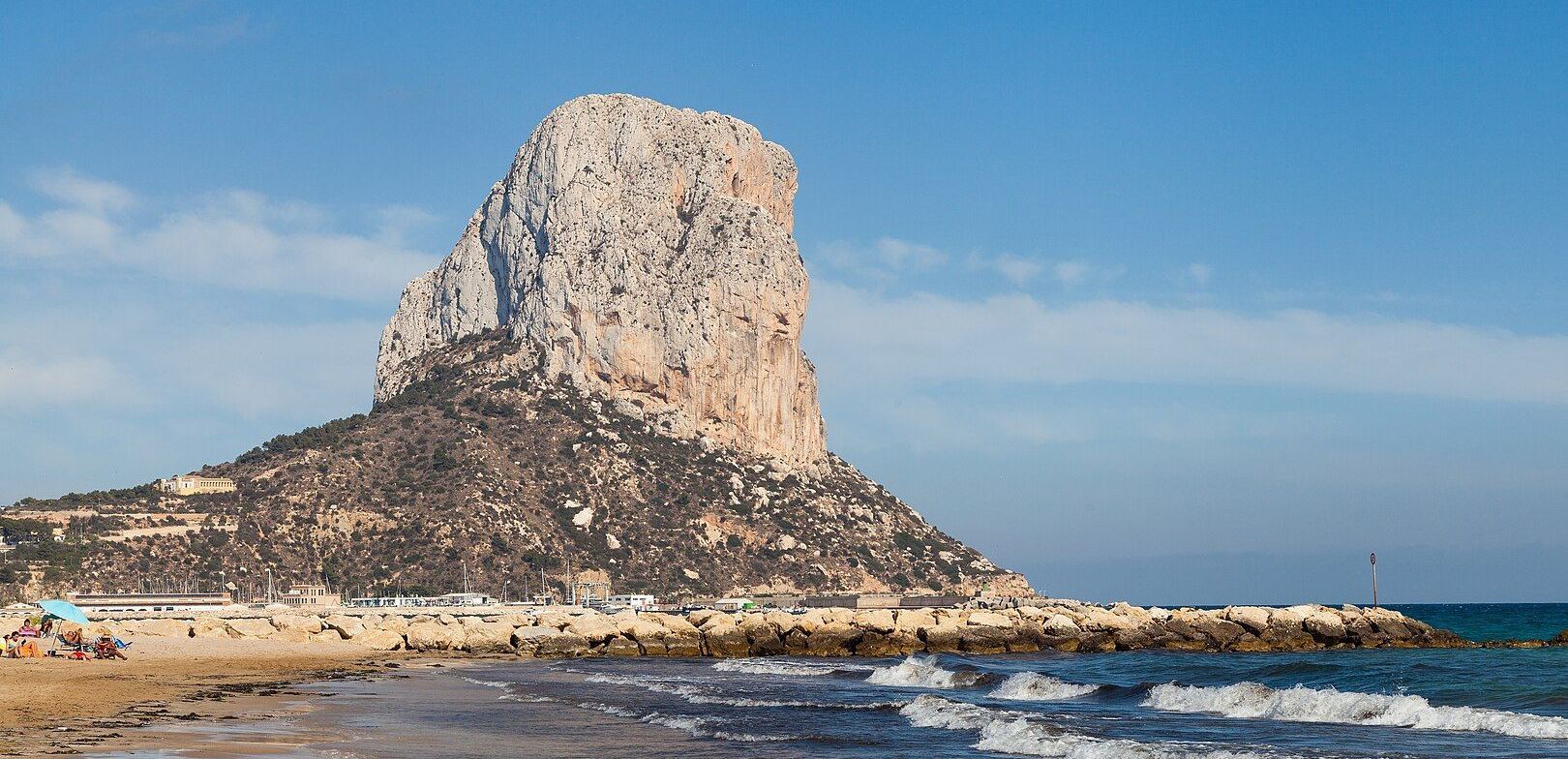WIRED WORDSMITH
TECH
CONTENT
Andalusia, Fish and The Funnel

Your Starters
Have you ever been on a night out and noticed that one venue, or a few are much busier and more popular than the others? Sometimes the reason is clear, there’s an incredibly popular café near me with a playroom that kids love to have fun in, and parents love to have an hour or so’s break in. This makes it stand out a great deal, and so it gets a lot of business.
I’m here at a popular restaurant I love to talk about marketing funnels and the lessons us digital marketers can learn from the apparently inexplicable success stories of some cafes, restaurants and bars.
The Andalucia is a well renowned local fish restaurant by the harbour in Calpe, Spain. One of about a dozen in the area that buy fish fresh off the boats as they return to port, then cook and sell them. Intriguingly, it is one of, if not the most popular of these, despite being the hardest to get to. It gets far more visitors than its neighbours, despite lacking the showy displays its competitors employ. Before we get into it, I’ll start by saying that no, the lesson is not that big attractive shows don’t work. I’m visual proof of the fact that they often do. (That’s a joke by the way).

Your Main Course
So, Let’s start with the big lesson:
The fact is that few consistently successful venues are as inexplicable in their success as they may first seem. It’s just a case of breaking the many minute and overlapping reasons down and lining them up in an order that will justify it.
So let’s talk about getting ahead in today’s competitive online market. The fact is you’re more likely to get ahead by consistent learning than to come up with some great, outstanding idea that no one has conceived of before. Even if you do, it won’t be long before it gets copied.
If you watch a lot of TV business dramas and so-called documentaries, you might end up believing that big, outstanding ideas and demonstrations of incredible, dramatic savvy are what make good businesses stand out. This is rarely the case either for these restaurants or for online businesses. If it was, the restaurant at the end with the big, bold display of fresh fish and poor score on Google would be winning. No, the nature of business – a load of people competing on equal terms for their own interest – means that most businesses get ahead by right of 1000s of tiny steps and ideas, rather than a few big leaps.
The first lesson to learn here is that the tiny steps only matter to your business if you can save them for posterity and freeze them in time. I know for a fact that the Andalucia has the best menu of the day. Not the cheapest, but the best value and the tastiest. They also have the best cooked Ala Carte Menu, employ the best staff, and serve the best drinks. Their position is also good, next to the beach and far from the busy road full of cars and salespeople to disturb you.
Finally, the atmosphere and friendliness of the owners makes you want to return again and again. These are all things that have probably been developed over time and, importantly, saved for posterity with each improvement. That’s why the Andalucia scores an impressive 4.5 on Google compared with 2.8 and 3.7 for its neighbours. It’s also why the company can charge more for its menus than these competitors and customers will still walk past the cheap, showy restaurants next-door to come here.
The Marketing Funnel
Now that we’ve got the general business advice and free restaurant promotions out of the way, let’s get down to the real meat, or should I say fish, of this lesson. This restaurant is relevant to what we do because, ultimately, a restaurant is a physical sales funnel. To get ahead of its competitors, the Andalucia has to be superior at driving prospective customers through the same four stages that your website does:
Attention, interest, desire, and action - AIDA
A: The high scores on Google and the bright signage grabbed my attention.
I: The good reviews, images and videos of the food online stimulated my interest, as did the recommendation and the dishes I saw when walking past
D: The friendly Maitre’d and the delicious descriptions on the menu turned that interest into desire for the food. Of course, looking rudely at the other diners’ meals always helps to build desire for the grub. Come on – we all do, even though it’s quite rude!
A: I took action when a kind waiter offered to show me to a table, then gave me a choice of delicious dishes for a very reasonable price from the menu of the day.
At each stage of the AIDA process, my interest in taking action and ordering at the restaurant increased, as did the owner’s chance of making money from me. I went from being a stranger with no value to the restaurant to a customer worth around £50 in just a short time, and with very little investment from the owner. This is an important process that every conversion-based business owner is familiar with.
However, another equally important process that conversion-based business owners need to master is the filtering out and narrowing down of non-ideal as they progress through the marketing funnel.
By the end of the first attention stage, the Andalucia Fish Restaurant’s signage and reviews had already filtered out people who were not nearby and were not looking to pay a decent (not super-cheap) price for good food. The interest stage filtered out people who were interested in steak or vegetable dishes, rather than fish. It also removed people who perhaps wanted something slightly different to the Andalucia’s Argentine cuisine. There were plenty more fish restaurants down the road for people who wanted Scandinavian salted fish, for example. This may sound like a bad thing, but it gets rid of people who would otherwise waste the staff’s time, clog up the entranceway and maybe even use up a table without ordering a meal.
By the time we got to the taking action stage, the real life funnel that surrounded the Andalucia had already filtered out a lot of the types of people that would not be interested in the restaurant’s offering for one reason or another. This is an important process for the business owner as well as me because if they do not filter out and narrow down prospects as they come closer to taking action, they will waste a lot of resources during the later stages of the process. This could be the time of the friendly Maitre’d and the kind waiter, the cost of producing a menu of the day for me or, moving to Google ads campaigns, or the simple cost of paying Google each time an interested or desireful person clicks on ads. It could be the net price of your campaign being recalculated each time someone appears to take action without really doing so. In both cases, these costs can really ad up, whether they waste your staff’s time or simply deduct from your bank account.

AIDA and Your Digital Marketing Funnel
So how do we create a digital marketing funnel that takes people through the AIDA process in a way that works for your business?
A: Grab people's attention using ads, intriguing headers, short videos, and catchy little text soundbites about your focus area.
I: Raise prospects' interest in your particular sphere of expertise by going into more detail about the little bites you offered in the A stage. Add depth and colour to your topics using similar media, as well as emails and social media for the long haul. Imagine the attention stage as a newspaper headline and this stage as the article.
D: Build desire for your offering with illustrations of it, descriptions, and sales offerings on the main pages and sale pages of your site, toward the end of your emails and on the occasional social media post and blog intermingled with the interest-building ones.
A: The call-to-action (CTA) is the self-explanitory first action building message. Everything from that, through the purchase page to the completion of the sale should encourage action. Be specific and clear.
Be careful to link all of these seamlessly, and don't go through the process too fast. While the attention-grabbing stage can and should be short, the interest stage should be longest by far and the desire-building stage should be second. Calling the prospect to action too early will just scare them off. Meanwhile, to filter out prospects who aren't interested in you, or whom you aren't interested in, become slightly more specific as you move through the marketing funnel and the AIDA process
So, we build a funnel online and tailor it carefully to filter out just the right person at each stage. At each stage, you want the people who might progress to the next stage. That is, the people who might want to progress, and who you want to progress. Then, in that stage, you decide whether they should progress to the next stage. This is done with content (text, ads, images and videos), giveaways (documents, vouchers etc.) and data (demographic data, and data about the person).
For example, if you have caught someone’s interest, you only want to start building their desire if they might want to buy from you, subscribe to your business or take whatever other action you are trying to promote.
Fish restaurants want to build desire in people who might want to eat some fish. Giving away free shots is a great way to build desire, but you’re going to end up with a load of drunk lads or a hen party in your restaurant annoying the diners and not eating anything. So you create a menu full of delicious fish-dish descriptions and perhaps images (content); you let people try some tasty crab cakes (giveaways); and you tell your waiting staff to direct people in pink tutus or Freddy Mercury costumes to the club down the road, because you know they are on a night out (personal and demographic data).
To put this in a digital context. The ideal pay per click ads or social media campaigns don’t grab the attention of anyone who might be interested in the content of the campaign itself, but only those who might desire what you offer. That’s because as soon as you have caught their attention, you are into the interest stage and are already looking to shed those without any chance of desiring your offering. Puttin people you know have no desire through to this stage is like enrolling your grandma in the Olympics. You know they aren’t going to qualify, and you’re just going to waste your time and money testing them.
To sum up this lesson: When progressing people to the next stage of AIDA, always be asking how you can progress them and whether they might qualify for the stage after. This foresight is how you save money at each stage. Every month, hundreds of companies waste millions of pounds, dollars etc. grabbing the attention and catching the interest of people who don’t want their product or can’t buy it.
Dessert
We know business success isn’t as simple as some claim, but nor is it as inexplicable as others do. While some the rare one or two get ahead through one leap of luck or genius, many more do so by having the knowledge and commitment to take 1000s of tiny steps in the right direction. In digital marketing, these steps are taken while leading groups of prospects toward your product, service or other action.
At each step you want to build the desire of as many real prospects as possible and shed everyone else to cut costs and waste. Remember, don’t be afraid to be cutthroat. Use foresight too: The more, the better. This is a science and an art that is learned gradually. We will learn more about this art in a future blog. The lesson here is to build a conversion funnel that works for you and work with it to keep customers flowing in to your business.
To learn more about the ins and outs of digital funneling, take a look at our funnel page.

All Rights Reserved - Wired Wordsmiths is copyrighted to Wireframe Partners Limited | Privacy Policy


